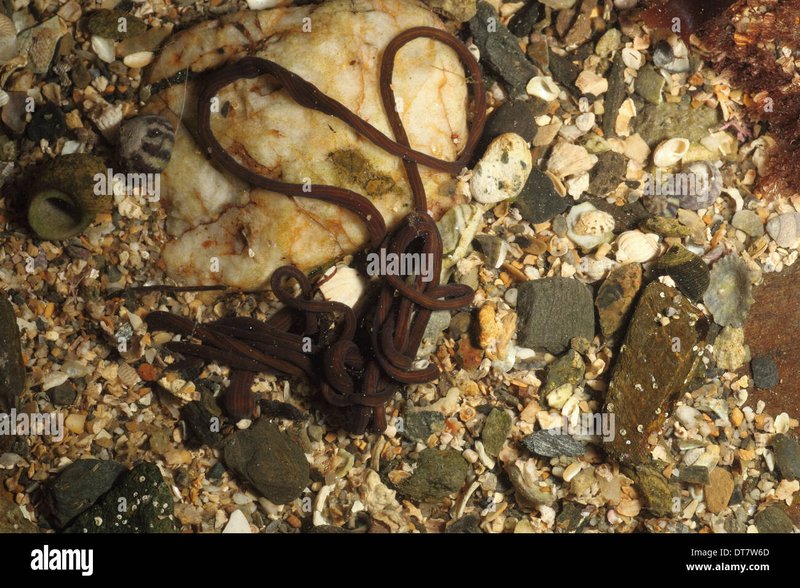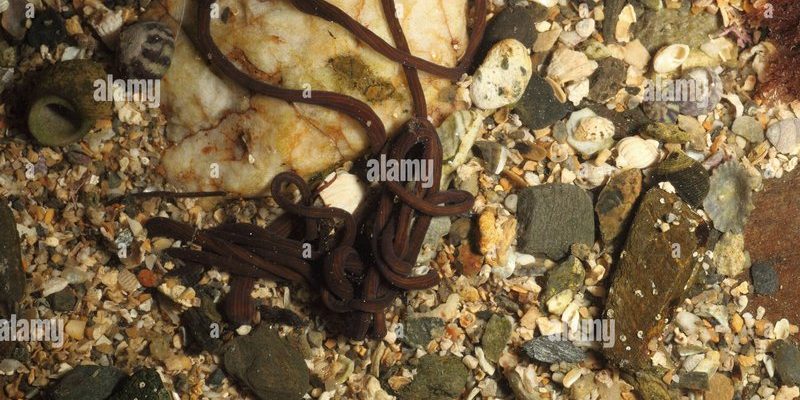
Bootlace worms, known scientifically as *Lineus longissimus*, are some of the longest worms in the world, stretching up to 55 meters (over 180 feet!) in length. But size isn’t their only remarkable feature. They thrive in intertidal zones, where they must adapt to changing environments. While many animals might retreat to deeper waters, bootlace worms have developed some clever strategies to combat drying out. So, grab your cup of coffee, and let’s explore how these unique worms survive the ebb and flow of ocean life.
Understanding the Bootlace Worm’s Habitat
The bootlace worm calls the intertidal zone home, which is the area that gets covered by water at high tide and exposed at low tide. This zone is rich in nutrients and supports a variety of marine life. However, it’s also a place of extreme change. When the tide goes out, temperatures can rise, and moisture levels can plummet. Think of it as living on a roller coaster that never stops—one minute you’re submerged in water, and the next you’re hanging on for dear life!
In this dynamic environment, what sets bootlace worms apart is their ability to navigate these fluctuations. They typically bury themselves in sand or mud, using their elongated bodies to anchor themselves. This not only helps them avoid harsh conditions but also keeps them safe from predators. Imagine curling up in a blanket fort during a storm; that’s essentially what these worms do!
The Importance of Moisture for Bootlace Worms
Moisture is **essential** for the survival of bootlace worms. Without it, they risk desiccation, which can lead to death. These worms have a **high surface area** relative to their volume, which makes them prone to losing water quickly. It’s like trying to keep a tiny sponge from drying out in the sun; it requires constant vigilance.
When bootlace worms sense that the tide is going out, they take immediate action to retain moisture. They secrete a mucus-like substance that coats their bodies. This slimy covering acts like a protective shield, helping to lock in moisture and prevent water loss. So next time you see a worm wriggling around in the sand, remember: it’s not just for show; it’s a survival tactic!
Behavioral Adaptations to Avoid Desiccation
Bootlace worms exhibit some interesting behaviors to cope with the changing tides. For starters, when the tide recedes, they often burrow deeper into the sediment. This **behavioral adaptation** allows them to find cooler, moister microhabitats beneath the surface. It’s like how we seek shade on a hot day to avoid sunburn.
Another strategy they use is **movement**. Bootlace worms are known for their ability to navigate through the sand, shifting positions to stay moist. When the tide comes back in, they emerge to soak up the fresh water, ready to continue their journey. This dynamic lifestyle requires them to be both flexible and resourceful—qualities that help them thrive in an environment filled with challenges.
Physiological Changes During Low Tide
In addition to behavioral adaptations, bootlace worms undergo **physiological changes** when faced with low tide. One of the fascinating aspects of these worms is their ability to slow down their metabolism. When water levels drop and conditions become harsh, they can enter a state of lower physiological activity, conserving energy and resources.
This slowdown allows them to survive periods of desiccation without immediate harm. Think of it like hitting the snooze button on your alarm clock; you’re not fully awake, but you’re still hanging in there. When the tide returns, bootlace worms can quickly ramp up their activity levels again, ready to feed and explore their habitat.
Why Bootlace Worms Matter in Their Ecosystem
You might be wondering why we should care about bootlace worms. Well, they play a significant role in their ecosystems. These worms help break down organic material in the sediment, recycling nutrients back into the environment. This process is vital for the health of the entire coastal ecosystem. Without them, you could say the ocean would be a bit less lively.
Additionally, bootlace worms serve as a food source for various predators, including fish and birds. The life cycle of these worms supports a broader web of marine life, making them an important component of their habitat. They might be small and slimy, but their impact is significant!
Bootlace worms are an extraordinary example of resilience and adaptation in the face of environmental challenges. By employing various strategies—such as burrowing, secreting mucus, and slowing down their metabolism—they manage to thrive in one of the most dynamic habitats on Earth. Each time the tide rolls out, they remind us of the delicate balance of life in the ocean and how creatures can adapt to survive against the odds.
The next time you encounter these fascinating worms, think of them not just as slimy creatures but as vital players in the intricate dance of marine ecosystems. Their ability to avoid desiccation at low tide is a testament to nature’s ingenuity, proving that even in the harshest conditions, life finds a way to endure. So, here’s to bootlace worms and their remarkable journey through the tides!

